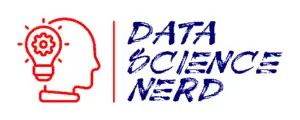Python is the most common language for machine learning. With various libraries and new techniques popping up frequently, it is essential to keep yourself updated using books written by subject experts. But not all books are useful; many of them are outdated or poorly written, which means you need to pick carefully so that you do not end up wasting your time and money.
Some of the best books available for machine learning in Python include Machine Learning For Absolute Beginners, Python Machine Learning By Example, Hands-On Machine Learning, Programming Collective Intelligence, and Advanced Machine Learning with Python.
This article will discuss the top 15 books that will help you master machine learning in Python. These books have been curated after a lot of research, so check out every entry on this list, and we are sure you will find a few gems.
Important Sidenote: We interviewed numerous data science professionals (data scientists, hiring managers, recruiters – you name it) and identified 6 proven steps to follow for becoming a data scientist. Read my article: ‘6 Proven Steps To Becoming a Data Scientist [Complete Guide] for in-depth findings and recommendations! – This is perhaps the most comprehensive article on the subject you will find on the internet!

Table of Contents
Machine Learning For Absolute Beginners
Author: Oliver Theobald
Formats: Kindle and Paperback
Latest edition: Second
The first book on our list is not specifically about machine learning in Python. Still, it is an excellent guide aimed at beginners, and it uses some Python coding as well. As its title suggests, this book will familiarize you with machine learning even if you know nothing about it. The author explains everything from the perspective of someone new to the machine learning world.
As you progress, there will be times when you’ll forget why you are supposed to do something or what a specific term means exactly. This book serves as an excellent reference, and you can use it for jogging your memory every now and then. It gives you a broad, lucid overview of everything you need to know about machine learning as a beginner.
The book also contains pretty visuals and graphs with simple yet comprehensive explanations of many algorithms. Lastly, it also includes some coding in Python to give you practical examples of how things work. If you’re new to Python machine learning and want to start on the right foot, we recommend you pick up this book. You can buy Machine Learning For Absolute Beginners on Amazon.
Machine Learning for Dummies
Authors: John Paul Mueller and Luca Massaron
Formats: Kindle and Paperback
Latest edition: First
Our second book is also not specifically for Python, but rather an introductory guide that uses Python and R code to illustrate practical applications of theory. Just as the previous one, this book is meant for beginners. It contains simple explanations of basic concepts and theories of machine learning.
Of course, you need to have some understanding of basic statistics, probability, and matrix to grasp the entire book. It teaches machine learning in two languages: Python and R code. Again, it does not focus solely on Python, but it is an excellent guide for people looking to get into machine learning.
You might face difficulties switching from one example in one language to another example in another. However, all instances are self-sufficient and comprehensible. Also, since it is a beginner’s book, it spends quite a few pages on Python and R code installation.
Overall, it is a helpful text that contains valuable insights into core machine learning principles and applications. You can purchase this book on Amazon. A newer version (second edition) of this guide is set to launch in February 2021. You can pre-order Machine Learning For Dummies 2nd Edition on Amazon.
Introduction to Machine Learning With Python
Authors: Andreas C. Müller and Sarah Guido
Formats: Kindle and Paperback
Latest edition: First
This is the first book on our list that focuses on Python. It mainly revolves around scikit-learn along with some matplotlib, pandas, and NumPy. We highly recommend this book for new aspirants of machine learning. It is an in-depth tour of some of the most useful methods in scikit-learn like regression, classifying, clustering, etc. The practical sections, facial recognition, for example, are deep enough to be exciting and useful without being overwhelming.
One nice thing about this guide is that it stays focused on practical machine learning applications in Python. You won’t find much mathematics; there are only a handful of formulas in the whole book. Obviously, this book alone won’t make you an expert, but by the end of the book, you’ll have a good idea of the basics of scikit-learn and some intuition about popular algorithms.
There are probably people who want to learn it all from scratch—how it works, what’s the math behind it, etc. But this book is meant for people who wish to have an overview of how things are and then gradually dive deep into it. You can grab a copy of it on Amazon.

Programming Collective Intelligence: Building Smart Web 2.0 Applications
Author: Toby Segaran
Formats: Kindle and Paperback
Latest edition: First
This is another introductory book for those who have no experience in machine learning. It is actually less of an introductory text and more of a practical guide on implementing machine learning. Experts in the field regard it as one of the best books to start understanding the mechanics of machine learning.
The book covers a wide range of concepts and techniques. It doesn’t just teach you libraries; instead, it shows you exactly how machine learning algorithms are implemented in pure Python. The author goes into detail about how to gather data from applications, create programs to access data from sources, and draw conclusions from the collected data.
The book doesn’t go into the mathematics behind algorithms, making for a casual and easy-to-understand style. Some of the topics discussed in the book include Recommendation, Clustering, Optimization, Support Vector Machines, Searching/Ranking, Decision Trees, Genetic Programming, and Feature Detection. Each chapter also has exercises to strengthen your learning.
Although the book is old, it is still relevant and makes for an insightful reading. You can grab a copy of this guide from Amazon.
Python Machine Learning by Example
Authors: Yuxi (Hayden) Liu
Formats: Kindle and Paperback
Latest edition: Second
Here’s another book designed to be an entry-point to machine learning. It makes use of Python libraries such as TensorFlow, scikit-learn, and Keras to teach you the basics of machine learning and how to implement ML algorithms. The book is filled with real-world examples to help you explore the world of data mining and data analysis.
It covers a variety of topics such as predicting situations using analytics, implementing machine learning regression and classification algorithms, solving challenging real-world problems, evaluating and optimizing the performance of an ML model, handling data extraction and manipulation, and visualization of data.
You’ll need to be familiar with Python before picking up this text, and it’ll be best if you know some statistical concepts as well. However, knowledge of statistics is not required to read the book.
This guide is recommended for beginners who want to get into machine learning while solving practical problems. You can grab a copy of this book on Amazon. You can also read it for free on Packtpub’s website by clicking here. Since it is also available for free, it is a good idea to check it out to supplement any machine learning courses you might be enrolled in.
Machine Learning Using Python
Authors: Manaranjan Pradhan and U Dinesh Kumar
Formats: Kindle and Paperback
Latest edition: First
This is another excellent book for machine learning aspirants. It teaches you various ML algorithms and how to implement them. The author also discusses several Python libraries used for data analysis like Pandas. It also includes significant mathematics, but the equations are explained nicely, and it doesn’t overwhelm you with all the statistics.
The examples in the book focus on core data science concepts, and you’ll find ready-made code templates that can be plugged and played in other algorithms as well.
It also contains several solved case studies, which help you understand and better implement machine learning algorithms. Some of the topics covered in the book include descriptive analytics, predictive analytics, decision tree learning, random forest, boosting, text analytics, and recommender system.
Like most books on machine learning, it requires prior familiarity with Python programming language. It is not a comprehensive book (is any machine learning book complete, though?) but offers a broad overview of many concepts and methods. This guide is recommended as a reference book to look up code snippets when working on machine learning projects. You can buy Machine Learning Using Python from Amazon.

Machine Learning in Action
Authors: Peter Harrington
Format: Paperback
Latest edition: First
To read this book, you’ll need working knowledge of Python, but prior familiarity with machine learning is not required. It is a high-level introduction to machine learning, having lots of Python code samples. The writing style is casual, and the concepts are explained in an easy-to-understand language.
The book doesn’t go deep into the mathematics behind methods. The author shows you just enough mathematics to help you get a sense of it. Then he teaches you how to use Python to implement the techniques. As we’ve said, it’ll be best if you have some knowledge of Python before picking up this book. That way, you won’t fall short of understanding anything.
It is divided into three sections: supervised classification supervised regression and unsupervised methods like dimensionality reduction. These topics are dealt with in detail, with comparisons of several different algorithms. It also looks at the emerging field of “big data” by introducing you to MapReduce, Amazon Web Services (AWS), and Hadoop.
We recommend this book for people who need a solid background in machine learning and want to get started with building real-world machine learning projects. You can purchase this book on Amazon, and it is only available in paperback format (no Kindle).
Natural Language Processing With Python
Authors: Steven Bird and Ewan Klein
Formats: Kindle and Paperback
Latest edition: First
Natural language processing (NLP) is an essential skill in machine learning. If you don’t know what natural language processing is, it is the backbone of tools we use every day. NLP is there in many software, from chatbots and search engines to grammar correction tools and voice assistance.
This book introduces you to the natural language toolkit (NLTK), a popular suite of Python libraries for building programs that deal with a range of NLP operations.
It hooks you from the beginning by teaching you to build exciting pieces of software. The book builds up from elementary models to complex ones as you progress. The authors have done a remarkable job of combining many freeware tools and resources into a useful package. It is a well-arranged guide to both Python programming and NLP, as it assumes no prior familiarity with either.
However, the first edition of the book feels overdue for an update. It includes some code that no longer functions with the current version of NLTK. Apart from that, it is an excellent resource for getting into NLP. You can purchase Natural Language Processing With Python from Amazon. Its free version is available here, which has been updated for Python 3 and NLTK 3.
Python Machine Learning
Authors: Sebastian Raschka and Vahid Mirjalili
Formats: Kindle and Paperback
Latest edition: Third
This book is a very practical guide to machine learning with Python. It helps you understand and develop different machine learning, data analysis, and deep learning algorithms. It covers the powerful library scikit-learn for implementing machine learning algorithms.
Then, it gives you an in-depth overview of deep learning using the TensorFlow module. You learn how to improve the efficiency of the models you make and many other beneficial methods to up your machine learning game.
The book also goes into the underlying math while explaining concepts in an easy-to-understand manner. It has the perfect balance of theory and practical code. You’ll find links to the author’s PDF notes at several places throughout the book where you can read more related theory.
It would be best to review the official TensorFlow documentation along with the book. It’ll help you comprehend much better. Note that this text isn’t recommended for absolute beginners. It assumes intermediate understanding or at least familiarity with machine learning principles and Python.
This book is currently in its third edition, which is excellent because it means that it is continuously updated to match the latest technologies like TensorFlow 2, GANs, and reinforcement learning. If you’re interested in buying this book, you can grab it on Amazon. Note that there have been various complaints regarding bad print quality, so you might be better off getting the Kindle version.

Hands-On Machine Learning With Scikit-Learn, Keras, and TensorFlow
Author: Aurélien Géron
Formats: Kindle and Paperback
Latest edition: Second
This book is a long and dense one. It serves as both a guide and a reference. It dives deep into scikit-learn and TensorFlow to teach you how to implement machine learning algorithms. The book discusses concepts from the very beginning and takes you far into advanced theories. It makes an excellent guide for those looking to get into machine learning using informative graphics and practical code examples.
The first half of the book deals with machine learning and scikit-learn, while the second half discusses deep learning and TensorFlow. It assumes some familiarity with Python programming and the fundamentals of mathematics. This book will help your machine learning and deep learning journey if you know these two things.
One nice thing about this guide is that you can follow all the material using Jupyter notebooks. It explains the most used algorithms and concepts with the perfect balance of theory and practical application. Whether you’re a data scientist wanting to build predictive models in Python, or a software developer looking to become a machine learning engineer, this book will be your guide.
You can get Hands-On Machine Learning With Scikit-Learn, Keras, and TensorFlow from Amazon.
Machine Learning With Python Cookbook
Author: Chris Albon
Formats: Kindle and Paperback
Latest edition: First
Here’s another Python book that focuses on machine learning, deep learning, and data science. It is not too detailed as it covers an array of topics in machine learning. The text begins with common topics like Linear Regression. It then goes into concepts like neural networks and is filled with well-explained practical examples to solidify what you’ve learned and teach you to implement machine learning algorithms.
This isn’t a book for complete beginners. It is not an introduction to machine learning in Python; instead, it is more like a cheat sheet, full of hints, explanations, and examples for using Python and associated libraries. At the beginning of the book, the author states that you need to have some Python and machine learning experience to fully benefit from this book.
Since it is a cookbook, it is not necessary to read it from cover to cover. But it is best to skim through the pages and see what’s available. It is a resource meant to be placed beside your computer so that you can look up any specific problem. The author has done a fantastic job of collecting the most common machine learning issues and summarizing their solutions in one text. You can buy it on Amazon.
Advanced Machine Learning With Python
Author: John Hearty
Formats: Kindle and Paperback
Latest edition: First
As the title suggests, this book is not meant for beginners. It requires that you have a fair bit of knowledge about machine learning and Python programming. For example, you can start your journey with Python Machine Learning and perhaps pick up Building Machine Learning Systems with Python for an additional perspective. Then, grabbing this book will allow you to grasp cutting-edge machine learning concepts and step up your game.
The author covers many approaches, including principal component analysis (PCA), self-organizing maps, deep learning, and semi-supervised learning, such as Contrastive Pessimistic Likelihood Estimation (CPLE).
The book explains some less commonly used machine learning algorithms, mainly with the help of the Python Theano library. Also, it uses popular datasets used in machine learning contests like CIFAR-10 and MNIST.
Throughout the book, you’ll be solving challenging data science problems by using advanced machine learning techniques in Python. It is a practical book that helps you sharpen your machine learning skills. Although it may feel fast and difficult at times, the book is rewarding if you stick to it until the end. You can buy a copy of this guide from Amazon.

Building Machine Learning Systems With Python
Authors: Willi Richert and Luis Pedro Coelho
Formats: Kindle and Paperback
Latest edition: Third
This book gives you a broad overview of the various machine learning algorithms currently used in the field. It also teaches you how to use them efficiently and what to look out for when applying them. However, the author doesn’t throw crazy behind-the-scenes mathematics at you.
It is not a guide for complete beginners. You have to be familiar with Python programming, machine learning, and the libraries discussed in the book. It starts by brushing up on your Python machine learning knowledge and introducing libraries. Then, it moves on to complex projects on Modelling, Recommendations, datasets, and so on. The examples are challenging and complex, but at the same time, easy to follow.
As the title suggests, the book is about machine learning with Python. It has in-depth sections on how you can use scikit-learn for classification and regression tasks. It doesn’t teach you scikit-learn from the beginning but doesn’t expect you to master it either. Apart from scikit-learn, the text also looks at other libraries like genism.
It is an excellent book for all Python programmers who want to go deep into machine learning. You can grab a copy of Building Machine Learning Systems With Python on Amazon.
Learning Scikit-Learn: Machine Learning in Python
Authors: Raúl Garreta and Guillermo Moncecchi
Format: Kindle/Paperback
Latest edition: First
This book was published in 2013, so many of its code samples are outdated and desperately need to be upgraded. To be honest, most of these follow-along-with-me types of books have this problem. Not all of them are updated regularly to match the latest versions of libraries and applications.
However, the book’s overall content is still relevant, and it makes for an insightful introduction to machine learning with Python. The author gives you a broad and practical overview of everything involved in the field of machine learning. Needless to say, you’ll need some background in computer science, and it is even better if you’ve read a book or two on machine learning and have a general idea of it.
By the end of this book, you’ll have an understanding of the basics of machine learning algorithms and the Python libraries used to implement them. The text also introduces you to the scikit-learn library. You’ll learn how to use it to accomplish some basic machine learning tasks. Like most books on this list, it doesn’t delve deep into the mathematical side of things.
You can buy Learning Scikit-Learn: Machine Learning in Python from Amazon.
Machine Learning: An Algorithmic Perspective
Author: Stephen Marsland
Format: Hardcover
Latest edition: Second
All the books we’ve discussed until now look at the development side of machine learning. They teach you how to implement ML algorithms using Python libraries. However, this book focuses more on the mathematics behind Python machine learning. It also covers topics that haven’t been discussed in the above books, such as Hidden Markov Models, Markov Chain Monte Carlo, and Neural Networks.
Even though this book is mathematically oriented, it still has a lot of Python. Each chapter is accompanied by practical exercises and source code in Python.
By the end of the book, you’ll have a solid foundation in machine learning and will also know how things work behind the scenes. It introduces new machine learning concepts in an easy-to-understand language, so it can also serve as an introductory book for computer science students with a statistical background.
It is a must-read if you’re interested in learning the relevant mathematics and statistics of machine learning along with Python programming. Of course, you’ll need to have a statistical background to fully reap the benefits of this text. As of writing, Machine Learning: An Algorithmic Perspective is only available in hardcover format on Amazon.
Author’s Recommendations: Top Data Science Resources To Consider
Before concluding this article, I wanted to share few top data science resources that I have personally vetted for you. I am confident that you can greatly benefit in your data science journey by considering one or more of these resources.
- DataCamp: If you are a beginner focused towards building the foundational skills in data science, there is no better platform than DataCamp. Under one membership umbrella, DataCamp gives you access to 335+ data science courses. There is absolutely no other platform that comes anywhere close to this. Hence, if building foundational data science skills is your goal: Click Here to Sign Up For DataCamp Today!
- IBM Data Science Professional Certificate: If you are looking for a data science credential that has strong industry recognition but does not involve too heavy of an effort: Click Here To Enroll Into The IBM Data Science Professional Certificate Program Today! (To learn more: Check out my full review of this certificate program here)
- MITx MicroMasters Program in Data Science: If you are at a more advanced stage in your data science journey and looking to take your skills to the next level, there is no Non-Degree program better than MIT MicroMasters. Click Here To Enroll Into The MIT MicroMasters Program Today! (To learn more: Check out my full review of the MIT MicroMasters program here)
- Roadmap To Becoming a Data Scientist: If you have decided to become a data science professional but not fully sure how to get started: read my article – 6 Proven Ways To Becoming a Data Scientist. In this article, I share my findings from interviewing 100+ data science professionals at top companies (including – Google, Meta, Amazon, etc.) and give you a full roadmap to becoming a data scientist.
Conclusion
Machine learning is a growing field, and more and more people are turning toward it for a career. Python is the language most commonly used for machine learning, so if you want to become a machine learning engineer, you need to know how to use Python programming language to create machine learning models and apply algorithms.
To help you start your Python machine learning journey, we have discussed the 15 best machine learning books that use Python to teach ML concepts. Most of these books do not cover the mathematical or statistical side of machine learning; they are focused more on teaching you libraries to help you implement ML algorithms. Some of the books’ code may be outdated, but it should not hinder your learning.
Overall, this list is almost exhaustive and contains the best books for all skill and experience levels.
BEFORE YOU GO: Don’t forget to check out my latest article – 6 Proven Steps To Becoming a Data Scientist [Complete Guide]. We interviewed numerous data science professionals (data scientists, hiring managers, recruiters – you name it) and created this comprehensive guide to help you land that perfect data science job.
Affiliate Disclosure: We participate in several affiliate programs and may be compensated if you make a purchase using our referral link, at no additional cost to you. You can, however, trust the integrity of our recommendation. Affiliate programs exist even for products that we are not recommending. We only choose to recommend you the products that we actually believe in.
Recent Posts
Data science has been a buzzword in recent years, and with the rapid advancements in artificial intelligence (AI) technologies, many wonder if data science as a field will be replaced by AI. As you...
In the world of technology, there's always something new and exciting grabbing our attention. Data science and analytics, in particular, have exploded onto the scene, with many professionals flocking...
